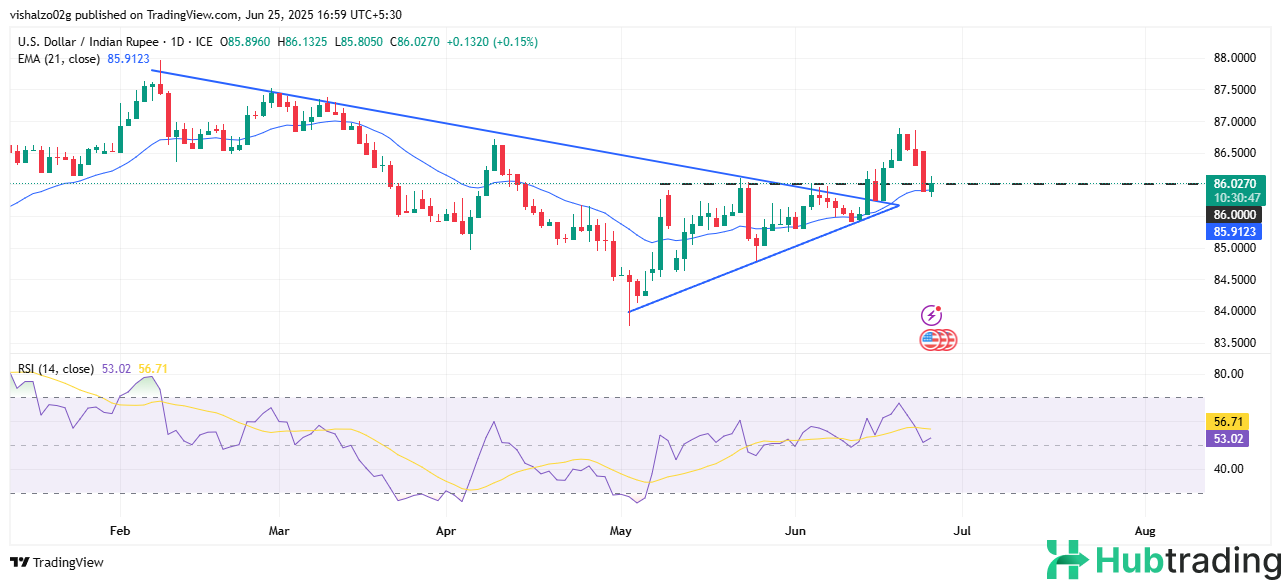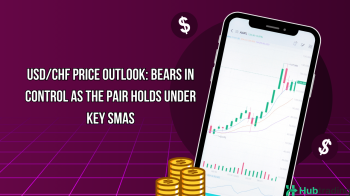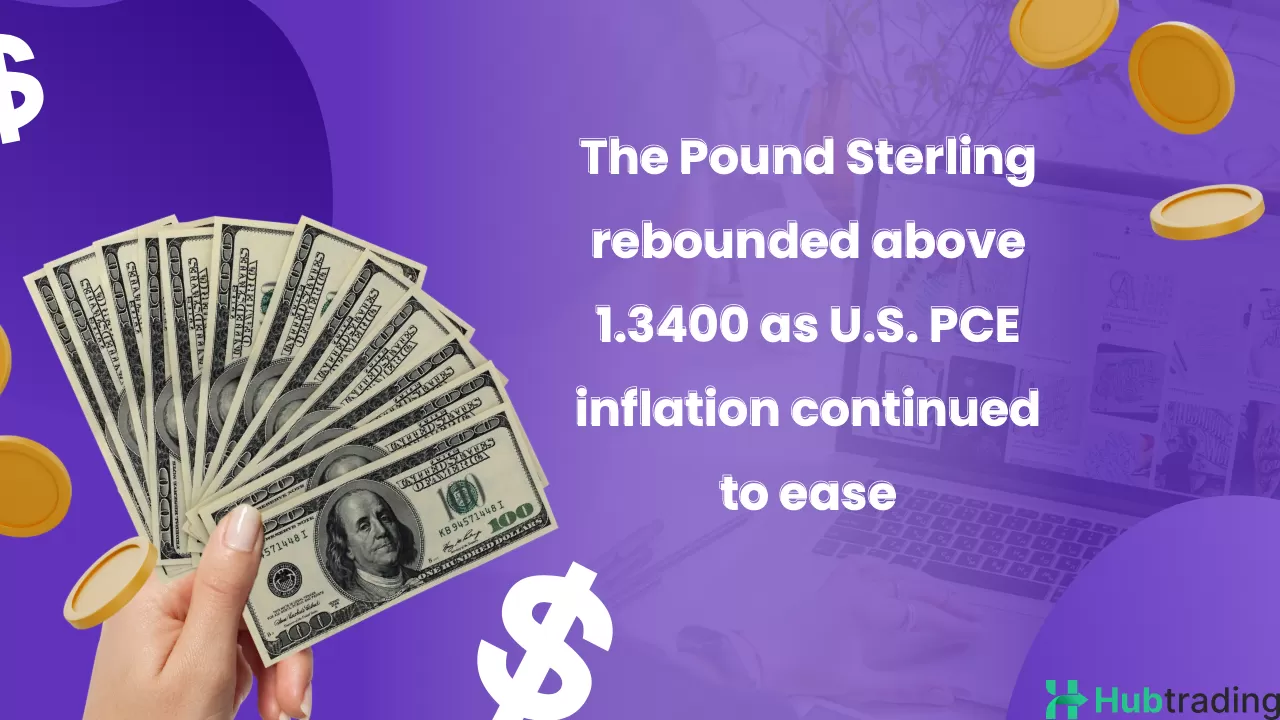-
USD/INR holds above 86.00, breaking a three-day losing streak after bouncing off 21-day EMA support near 85.80.
-
The Indian Rupee slips as importer demand for the US Dollar and cautious market sentiment limit its upside, despite easing geopolitical tensions.
-
Fed Chair Powell maintains a cautious stance, signaling no urgency for rate cuts, with attention turning to his Senate testimony on Wednesday.
The Indian Rupee (INR) edged lower against the US Dollar (USD) on Wednesday, giving up early gains as the Greenback found support and steadied. The Rupee opened on a stronger footing amid improved risk sentiment but gradually lost momentum through the session, as the US Dollar Index (DXY) held firm near last week’s low. Meanwhile, Crude Oil prices remained steady following a sharp two-day decline, providing only limited relief to the Rupee.
USD/INR is showing signs of a mild rebound, snapping a three-day losing streak after bouncing off intraday lows near 85.80. The pair found support at the 21-day Exponential Moving Average (EMA) and is trading around 86.25 during the U.S. trading session.
Tensions in the Middle East have eased following a ceasefire between Israel and Iran, helping to stabilize global markets and reduce safe-haven demand. While oil prices have steadied, contributing to broader risk-on sentiment, the Rupee’s reaction has been restrained. Persistent demand for US Dollars, especially from importers such as oil companies, continues to weigh on the INR, which remains vulnerable to changes in global risk appetite.
Market Movers: Rupee Volatility Lingers as RBI Tightens Liquidity and Powell Maintains Caution
- The Indian Rupee saw its strongest daily gain in a month on Tuesday, yet volatility continues, with USD/INR fluctuating between ₹85.80 and ₹86.89 over the past week. For June so far, the average exchange rate stands near ₹86.00, closely aligning with the year-to-date average of approximately ₹86.10.
- In its June bulletin released Wednesday, the Reserve Bank of India (RBI) highlighted the resilience of the domestic economy despite global challenges, including trade disruptions and geopolitical tensions. The “State of the Economy” article noted that India remains on a stable growth trajectory, supported by high-frequency indicators showing strength across both industrial and services sectors in May 2025.
- The RBI now expects inflation to undershoot its target, trimming its FY2025–26 forecast to 3.7% from the previous 4.0%. The central bank expressed confidence in a sustained alignment of headline inflation with the 4% target, citing favorable near- and medium-term trends.
- To manage Rupee volatility, the RBI has reportedly been active in the currency markets, intervening through US Dollar sales to cap excessive depreciation. Market participants expect the central bank to continue this calibrated approach—smoothing fluctuations while preserving foreign exchange reserves.
- Additionally, the RBI signaled a shift in liquidity management, announcing plans to withdraw Rs 1 trillion ($11.6 billion) from the banking system through a seven-day variable rate reverse repo auction on June 27. This is the first such operation since November and is intended to bring overnight call rates closer to the repo rate, potentially lifting short-term money market yields.
- India’s equity markets responded positively to easing geopolitical risks and strong domestic fundamentals. The benchmark Sensex surged 700.40 points to close at 82,755.51, while the Nifty rose 200.40 points to finish at 25,244.75.
- Crude Oil prices also stabilized after a steep drop earlier in the week, with Brent hovering near $66.60 and WTI around $64.30 on Wednesday. The de-escalation of tensions between Iran and Israel has eased concerns about potential supply disruptions, offering relief to oil-importing nations like India.
- Testifying before Congress on Tuesday, Federal Reserve Chair Jerome Powell reaffirmed the Fed’s cautious stance, indicating that a rate cut in July is unlikely. Powell stressed the importance of further clarity on inflation trends and potential effects from tariff increases before making any policy decisions. His remarks suggest that the Fed remains data-driven, with markets now pricing in a possible rate cut in September or later.
- Powell is scheduled to appear before the Senate Banking Committee at 10:00 am EST on Wednesday for the second day of his semi-annual monetary policy report.
- The US Dollar Index (DXY) remains stable around the 98.00 mark as traders stay cautious ahead of additional guidance from Powell.
USD/INR Technical Outlook: Range-Bound Trading Likely to Persist

USD/INR is currently trading around 86.03, retesting its breakout zone after pulling back from recent highs. The pair found support near the 21-day Exponential Moving Average (EMA) at 85.91, which also marks the upper boundary of a previously broken symmetrical triangle pattern.
The Relative Strength Index (RSI) on the daily chart has eased to 53.02, indicating weakening bullish momentum. This suggests the pair may remain range-bound between 85.80 and 86.90 in the short term. A decisive breakout above or below this range will likely determine the next directional trend for the pair.





